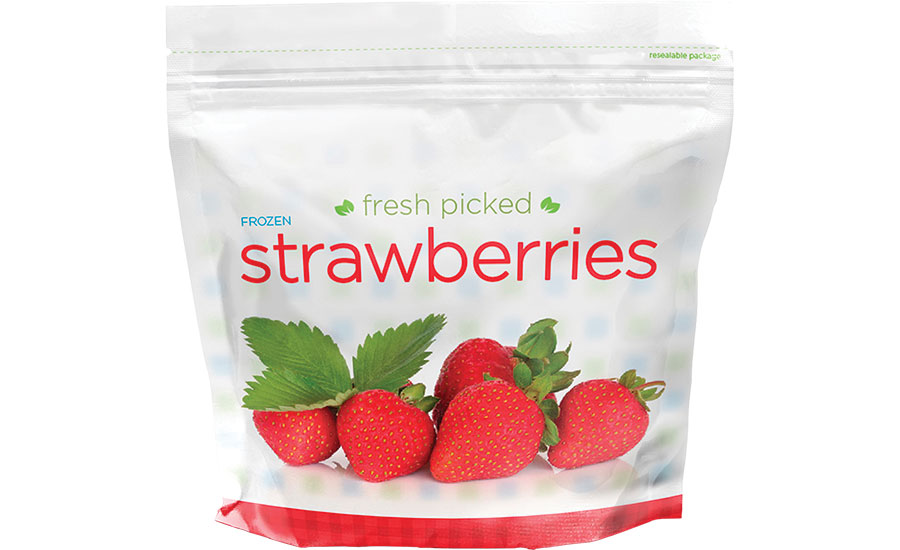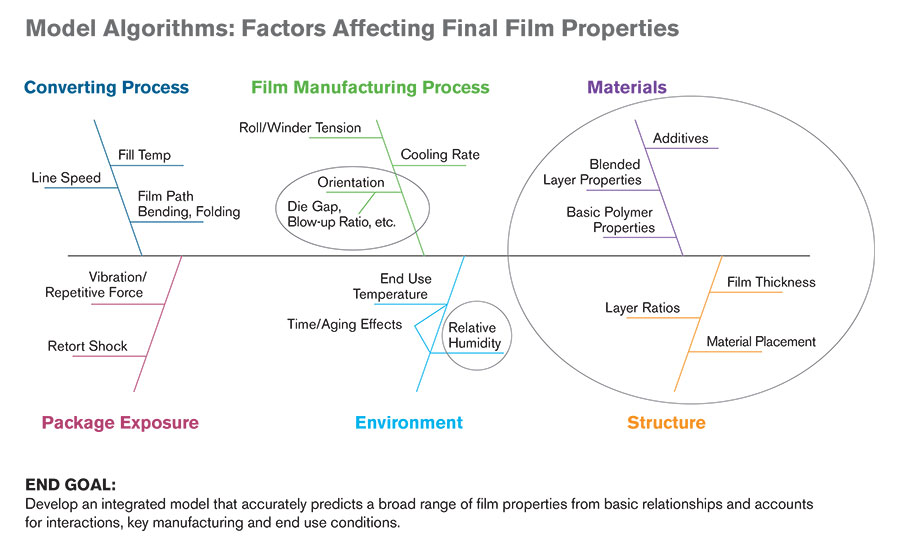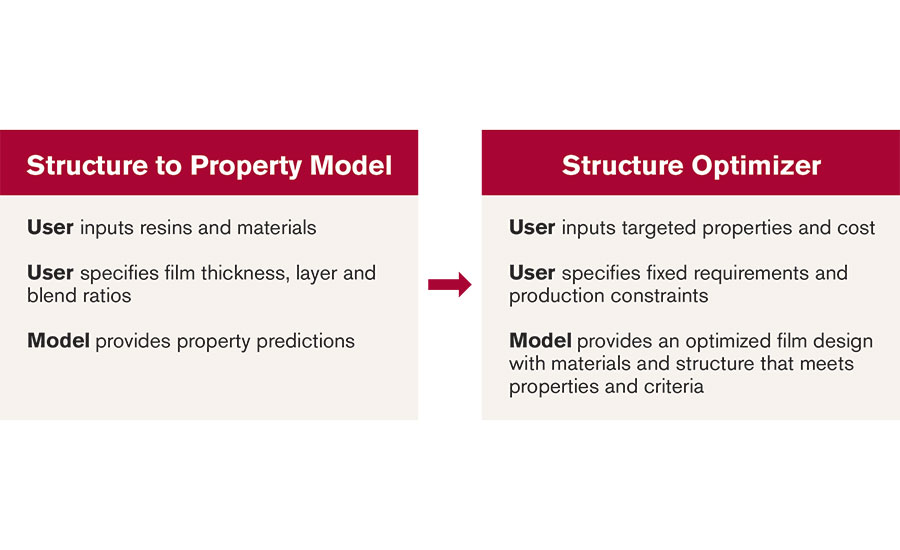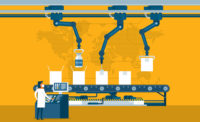While the move toward more layers is accelerating, there are three trends making the work of designing new flexible packaging structures more challenging.
- Expanded resin choices and material options.
- Better blend capabilities in coextruded film lines.
- Increased demand to redesign packages for sustainability.
While more material choices and layers create increased opportunities for innovation, the universe of possible polymer combinations and their placement in a multilayer structure seems infinite. Another complication is that creating new or modified multilayer test structures requires expensive trials on commercial or pilot film lines.
Together, these factors — expanding material choices, an infinite number of possible polymer combinations and high development costs — can overwhelm package designers. Paradoxically, it seems, too many options can slow innovation.

Acceleration Through Predictive Models
To help with the increasing complexity in multilayer films, package designers are turning to modeling programs that predict properties of potential films with materials in different configurations. Integrated models allow designers to quickly estimate the impact of material, layer, or blend-ratio changes on the cost and target properties of a film. When constructed properly, such models can also reduce the number of trials required, cut development cycle time and spur creative innovations. In particular, it can accelerate the commercialization of downgauged and recyclable packaging, both musts for meeting consumer and brand owner demands for more sustainable films.
A recurring challenge for flexible packaging designers is to optimize multiple properties while minimizing overall costs. Materials that directionally increase one critical film property may simultaneously decrease another. High-density polyethylenes (HDPEs), for example, provide higher secant modulus but typically have lower machine direction (MD) tear strength. A good model will predict many properties simultaneously and allow the designer to evaluate similar tradeoffs.
Knowing the Model’s Limits and Assumptions
Those developing multilayer films today are likely using modeling principles to identify promising materials or to rank different options. For instance, estimating finished film costs from resin prices, layer ratios and processing costs requires a series of calculations that constitute a predictive model. Similarly, using the inverse parallel resistor formula to predict the oxygen transmission rate (OTR) through a multilayer film can be the basis of a barrier or permeability model.
Film cost and OTR predictions, however, have different limits and demands for accuracy. A film’s predicted cost will not be affected by end-use conditions such as temperature. By contrast, a film’s OTR will change with temperature and the relative oxygen concentration inside the package.
Many other factors can affect film properties and package performance beyond end-use or storage conditions. They include film processing conditions, additives and interactions between blended resins along with countless other variables. While no model can account for all the factors that ultimately impact film performance, a predictive model can still be useful if users understand its limits and assumptions.

The cause-and-effect or fish-bone diagram pictured above displays multiple factors that can affect end-use film properties. The circles cover effects that are currently accounted for in a specific, comprehensive model. In a dynamic modeling platform, the number or range of these circles will expand over time to cover more factors and their effects. Diagrams like these can be helpful for understanding what factors are (and are not) being accounted for and help film designers consider which factors may impact their film or package design.
The Future of Flexible Packaging Models
Today’s models predict end-use properties for multilayer structures that use specific materials in specific configurations. While accurate property predictions for a simulated film structure can save significant time, the job of finding the best combination that optimizes properties of a real-world film can still be challenging. Existing models or calculators require an iterative, trial-and-error approach that is time consuming and provides no guarantee that the best structure will be achieved.
Tomorrow’s models will reverse the process: Rather than predicting properties for a specific film, these “Structure Optimizer” models will generate the optimized structure that meets targeted properties and cost requirements, within specifications and production constraints. User inputs and model outputs for this new type of model are provided in Figure 2.
The graphic above highlights the differences between a traditional Structure Optimizer Model, which only provides property predictions for a modeled film structure, and a future Structure Optimizer Model, which provides an optimized film design based on end-user requirements inputted by the film manufacturer.

An example of how such a model would work: Suppose a film designer has a five-layer, blown film line and needs to develop a recyclable film with an OTR below 50 ccs/100in2-day-atm, secant modulus greater than 300 MPa and MD tear greater than 200 grams at a minimum cost. The film specifications provide explicit targets with the overall objective of minimizing cost. The need for recyclability mandates that only certain polymers can be used. For example, the user may specify that only polyethylenes within a certain density range are acceptable and the inside layer must be a sealant. A production constraint could include layer ratio ranges; although there are five film layers, the maximum or minimum percentage in any layer will be dictated by relative extruder output rates and the die geometry.
With these inputs, new models will use regression analysis to identify the best solution or structure. The model will choose the materials, placed in the appropriate layers at the right ratios in a structure that meets all requirements at the lowest cost. In some cases, no solution or structure will exist that meets the defined targets and constraints. This is still valuable information, as it will tell the development team that it should reconsider the targets or look for new materials or lines that can achieve the film characteristics they desire. In other cases, the model may deliver an unrealistic solution that cannot be implemented. When this occurs, the user should review the constraints to ensure certain conditions or combinations are excluded.
New materials and technologies are expanding our capabilities every day. Flexible packaging manufacturers should leverage these technologies and use predictive models judiciously to accelerate their film development process. While predictions should never replace real data from actual films, good models should be embraced as effective, low cost tools that augment film designers’ capabilities and help achieve the optimal design.


